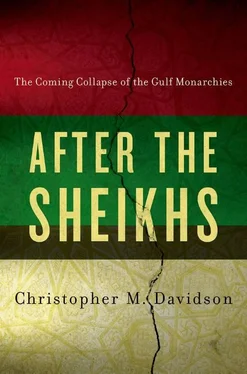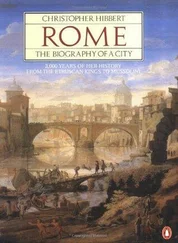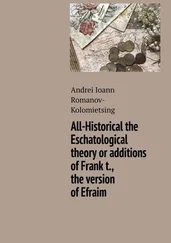Clearly, this under-utilisation of major airports was a direct result of so many facilities having been built in a relatively small country. This is a problem still very much in evidence today, with new international airports in Al-Ayn and Fujairah, and with foreign airlines having long since cut back their flights to Sharjah airport as a result of the continuing expansion of Dubai’s airport only a few miles away. In fact, Dubai airport is closer and now far more accessible to most parts of Sharjah than the Sharjah airport, and with the completion of Dubai’s new airport in Jebel Ali and the further expansion of Abu Dhabi’s airport the competition will increase even further. With regards to the UAE’s airlines there has been much the same problem, especially since Abu Dhabi’s withdrawal from Gulf Air. The launch of Etihad Airways in 2003 was deemed by many analysts to be wholly unnecessary for the UAE, not least because Dubai’s highly successful Emirates airline — set up by the former crown prince and current ruler — was headquartered only a few hundred miles away. Designated by an Abu Dhabi law as being the new ‘national airline of the United Arab Emirates’ and chaired by a key member of the Abu Dhabi ruling family, [520] 59. The chairman is Ahmad bin Saif Al-Nahyan. For details of the 5 November 2003 decree see Davidson, Christopher M., The United Arab Emirates: A Study in Survival (Boulder: Lynne Rienner, 2005), chapter 3.
the establishment of Etihad Airways must be viewed as a response to Dubai’s highly successful operation, as much as anything else.
Another visible example of the squandering of national wealth has been the funding of expensive, prestige projects that have usually been on the whim of ruling family members or their affiliated development companies with direct access to resources, and thus have bypassed regular government channels or planning controls. Often referred to in the region as ‘follies’ or ‘white elephants’, these have frequently resulted in empty buildings, half-finished schemes, or other high cost misadventures. In some cases this has led to grumbling and discontent among nationals, with the most outspoken claiming that these projects are evidence of corruption and waste at the highest levels. In the late 1980s, for example, the ruler of Sharjah [521] 60. Sultan bin Muhammad Al-Qasimi.
was heavily criticised for his ‘sanctioning of expensive and unnecessary prestige projects including… an unfinished television station and several empty museums’. Indeed, when his elder brother briefly ousted him during the 1987 coup, one of the reasons given was his high spending, despite the emirate’s limited resources. [522] 61. Brown, Gavin, OPEC and the World Energy Market (London: Longman, 1998), p. 359. It was believed that by 1987 Sultan had amassed debts of nearly $920 million following several ambitious construction projects.
Over the past decade Dubai has provided an even better example, with the emirate now being littered with unfinished, often environmentally damaging projects. These include an incomplete $11 billion ‘Arabian Canal’ which was originally supposed to extend 75 kilometres all the way around downtown Dubai, [523] 62. Limitless press release, 10 October 2007.
a third, unfinished ‘Palm Island’, which is currently just a pile of sand and rubble dumped out at sea, and the undeveloped ‘Dubai World’—an archipelago of dozens of artificial islands shaped like the countries of the world, but with only one being currently occupied. The building of these various islands was condemned by many environmental groups, as they were thought to be destroying natural maritime habitats, including coral reefs. [524] 63. See for example Purkis, S., and Riegl, B., ‘Spatial and Temporal Dynamics of Arabian Gulf Coral Assemblages Quantified from Remote-Sensing and in situ Monitoring Data (Jebel Ali, Dubai, UAE)’, Marine Ecology Progress Series , No. 287, 2005, pp. 99–113.
Even the Burj Khalifa can be considered a white elephant, with more than two thirds of its commercial units reportedly being unoccupied more than two years after its official opening. [525] 64. BBC News, 22 July 2012.
Although most of these Dubai projects were financed by real estate companies rather than the government or the ruling family, many were nonetheless personally sanctioned and encouraged by the ruler, and the companies involved can best be described as parastatals of the emirate’s government. As such, their misadventures directly contributed to Dubai’s 2009 crash and the emirate’s continuing debt burden.
Elsewhere in the UAE, Abu Dhabi’s rulers have also been facing criticism, with a slew of recent projects appearing to have little connection to official development plans. In early 2011, soon after it was revealed that Abu Dhabi was contemplating funding the construction of nine ‘energy-generating solar pyramids’ in the desert, including a central pyramid that would stand 50 metres tall, [526] 65. The National , 6 February 2011.
it was also reported by the British press that many UAE nationals were puzzled as to the increasing density of clouds and the increasing frequency of rain and storms. Residents of the city most affected — Al-Ayn — were becoming concerned over the violence of some of these storms, which were often accompanied by lightning, gale force winds, and even hail. According to The Sunday Times , the storms were the result of a secret project funded by the ruler of Abu Dhabi since 2010, which had been launched without consulting any Al-Ayn residents. Involving a Swiss weather systems company, the controversial scheme had aimed to increase rainfall over the city in question by seeding clouds with various chemicals, and had apparently generated more than fifty man-made rainstorms over the year. [527] 66. The Sunday Times , 2 January 2011.
Although a website with limited information was later published, it has since been removed and the total cost of the project remains unknown. A little later in the year a similar project in Qatar was also reported by the British press, when it transpired that the emirate had been paying for technology to create artificial clouds to provide shade for its football stadiums in the event that its 2022 FIFA World Cup would have to be played in the extreme heat of the summer months. If the system is implemented, each cloud will reportedly cost about $500,000 to produce, and will be remotely controlled by solar powered engines. [528] 67. The Guardian , 24 March 2011.
Of greater concern, perhaps, has been the accumulation of vast personal wealth by key members of the ruling families. This has been taking place since the mid-twentieth century and has been shrouded in near complete secrecy, often with the assistance of expatriate financial managers and ‘personal bankers’. With many rulers and their relatives still ‘owning’ most of their country’s land and natural resources, it remains very difficult to separate the wealth of ruling families from the state. Indeed, most of the original hydrocarbon concessions were signed between foreign oil companies and rulers, rather than with state officials. Although this is now no longer the case, it still appears that in some Gulf monarchies hydrocarbon revenues are first subjected to a share being taken by the ruling family, before the remainder is divided between the government and its various sovereign wealth funds. As with the various prestige projects, this is increasingly becoming the subject of criticism among national populations, with concern mounting over the complete unaccountability of the ruling elite and the impact this was likely to have on their welfare states and the continuing distribution of wealth. In 2011, this was described by one scholar as ‘…the king sometimes undertaking to redistribute the national wealth in favour of the underprivileged… but even this kind of social paternalism is limited by the predatory tendencies of the ruling clique, a close-knit network of families and clients, which ends up controlling a substantial part of the national resources’. [529] 68. Filiu, Jean-Pierre, The Arab Revolution: Ten Lesson from the Democratic Uprising (London: Hurst, 2011), p. 35.
Читать дальше












